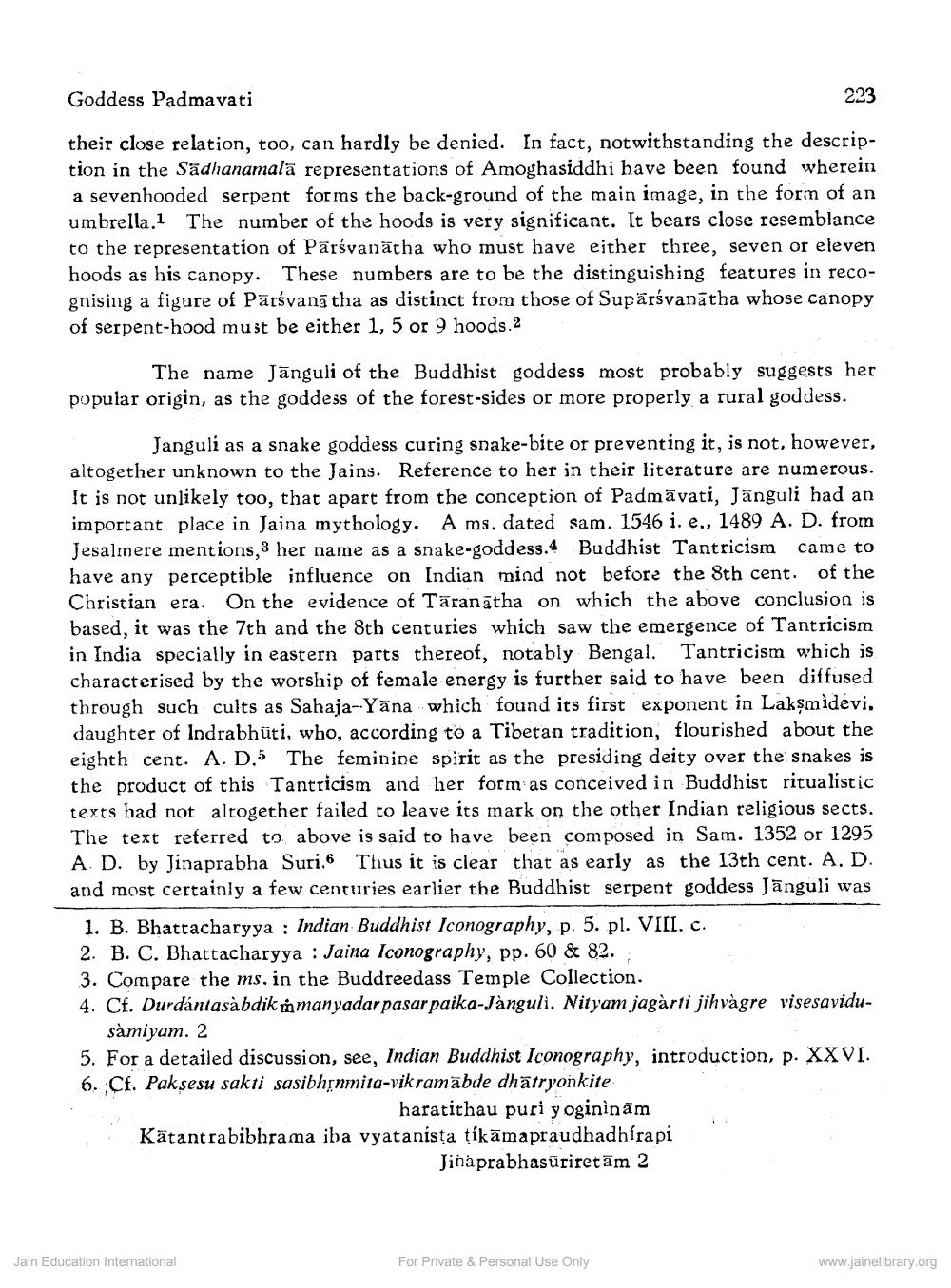________________
Goddess Padmavati
223
their close relation, too, can hardly be denied. In fact, notwithstanding the description in the Sadhanamala representations of Amoghasiddhi have been found wherein a sevenhooded serpent forms the back-ground of the main image, in the form of an umbrella.1 The number of the hoods is very significant. It bears close resemblance to the representation of Pārsvanätha who must have either three, seven or eleven hoods as his canopy. These numbers are to be the distinguishing features in recognising a figure of Pārśvana tha as distinct from those of Supärśvanātha whose canopy of serpent-hood must be either 1, 5 or 9 hoods. 2
The name Jānguli of the Buddhist goddess most probably suggests her popular origin, as the goddess of the forest-sides or more properly a rural goddess.
Janguli as a snake goddess curing snake-bite or preventing it, is not, however, altogether unknown to the Jains. Reference to her in their literature are numerous. It is not unlikely too, that apart from the conception of Padmävati, Jānguli had an important place in Jaina mythology. A ms. dated sam. 1546 i. e., 1489 A. D. from Jesalmere mentions, 3 her name as a snake-goddess. Buddhist Tantricism came to have any perceptible influence on Indian mind not before the Sth cent. of the Christian era. On the evidence of Taranātha on which the above conclusion is based, it was the 7th and the 8th centuries which saw the emergence of Tantricism in India specially in eastern parts thereof, notably Bengal. Tantricism which is characterised by the worship of female energy is further said to have been diffused through such cults as Sahaja Yäna which found its first exponent in Lakşmidevi, daughter of Indrabhūti, who, according to a Tibetan tradition, flourished about the eighth cent. A. D.5 The feminine spirit as the presiding deity over the snakes is the product of this Tantricism and her form as conceived in Buddhist ritualistic texts had not altogether failed to leave its mark on the other Indian religious sects. The text referred to above is said to have been composed in Sam. 1352 or 1295 A D. by Jinaprabha Suri. Thus it is clear that as early as the 13th cent. A. D. and most certainly a few centuries earlier the Buddhist serpent goddess Jānguli was
1. B. Bhattacharyya : Indian Buddhist Iconography, p. 5. pl. VIII. c. 2. B. C. Bhattacharyya : Jaina Iconography, pp. 60 & 82.; 3. Compare the ms. in the Buddreedass Temple Collection. 4. Cf. Durdántasàbdikî manyadar pasar paika-Janguli. Nityam jagàrti jihvagre visesavidu
sàmiyam. 2 5. For a detailed discussion, see, Indian Buddhist Iconography, introduction, p. XXVI. 6. Cf. Pak sesu sakti sasibhsnmita-vikramabde dhātryonkite
haratithau puri yogininām Kätantrabibhrama iba vyatanista tikāmapraudhadhírapi
Jináprabhasūriretām 2
Jain Education International
For Private & Personal Use Only
www.jainelibrary.org




